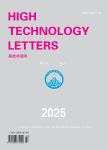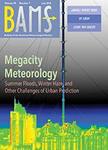版权所有:内蒙古大学图书馆 技术提供:维普资讯• 智图
内蒙古自治区呼和浩特市赛罕区大学西街235号 邮编: 010021
T=题名(书名、题名),A=作者(责任者),K=主题词,P=出版物名称,PU=出版社名称,O=机构(作者单位、学位授予单位、专利申请人),L=中图分类号,C=学科分类号,U=全部字段,Y=年(出版发行年、学位年度、标准发布年)
AND代表“并且”;OR代表“或者”;NOT代表“不包含”;(注意必须大写,运算符两边需空一格)
范例一:(K=图书馆学 OR K=情报学) AND A=范并思 AND Y=1982-2016
范例二:P=计算机应用与软件 AND (U=C++ OR U=Basic) NOT K=Visual AND Y=2011-2016





The growing complexity of hydrological systems necessitates innovative approaches to data management, knowledge management, and model development. Large language models (LLMs) have great potential to accelerate hydrological research by unifying and advancing these three critical aspects. In this perspective work, we review recent advances and applications of LLMs and exemplify using LLMs in hydrology studies. We demonstrate that LLMs can enhance data accessibility by efficiently extracting and organizing information from diverse sources and formats. LLMs also facilitate comprehensive knowledge management through knowledge retrieval and synthesis, enabling the integration of various datasets. Furthermore, LLMs, combined with modular development, Chain-of-Thought reasoning, and the intent-based network framework, hold immense promise for transforming physical model development and fostering model unification across scales. LLMs are powerful tools for integrating domain hydrological knowledge and advances in machine learning. Their potential in hydrological studies and the mitigation of their risks will require rigorous assessment, domain-specific regulations and guidelines, and significant contributions from hydrologists. We envision LLMs become indispensable resources for meeting the evolving demands of transdisciplinary hydrological research.
电话和邮箱必须正确填写,我们会与您联系确认。
版权所有:内蒙古大学图书馆 技术提供:维普资讯• 智图
内蒙古自治区呼和浩特市赛罕区大学西街235号 邮编: 010021

暂无评论